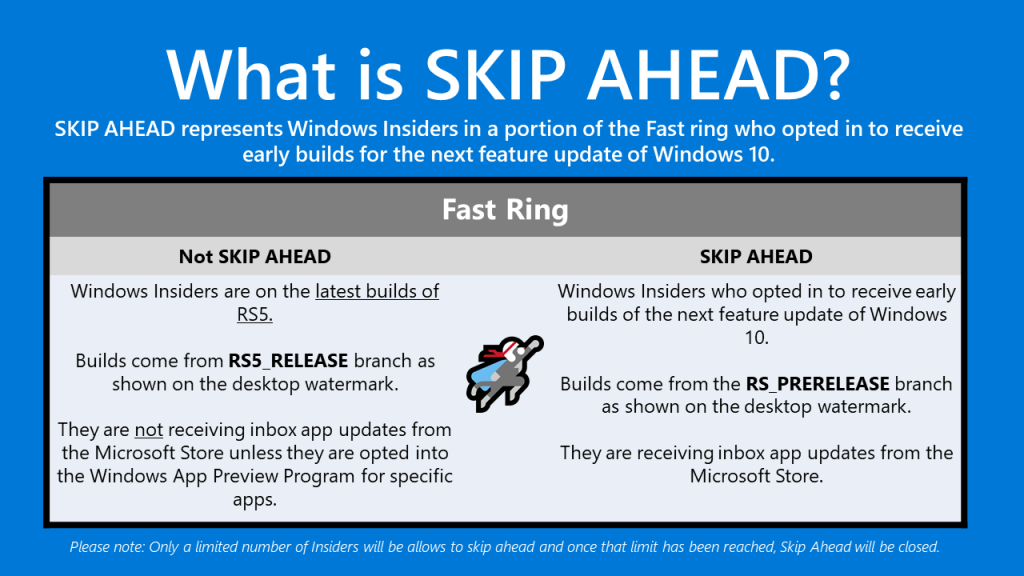Boost Win10 Boot: Fast Startup Guide

Uncover the secrets to turbocharging your Windows 10 boot time with our ultimate fast startup guide - you won't believe it!
Table of Contents
- Introduction: What is Fast Startup in Windows 10?
- Why Speed Matters: The Benefits of Fast Startup
- Setting Up Fast Startup: A Step-by-Step Guide
- Troubleshooting: When Fast Startup Doesn't Work
- Keeping Your System Fast: Regular Maintenance
- Conclusion: Enjoy Your Speedier Windows 10
- FAQs: Questions About Windows 10 Fast Startup
Introduction: What is Fast Startup in Windows 10?
Have you ever wondered how your computer can start up so quickly? Well, that's where Fast Startup comes in! Fast Startup is a special tool in Windows 10 that helps your computer wake up from sleep mode faster than usual. It makes your computer boot up in a flash, so you can get to using it right away. Let's dive into what Fast Startup is all about.
What Fast Startup Does
Fast Startup is like a magic spell for your computer. When you shut down your computer, it doesn't actually turn off completely. Instead, it goes into a special sleep mode that uses very little power. Fast Startup helps your computer remember its settings and programs so that when you turn it back on, it can wake up quickly and be ready for you to use in no time.
Why Speed Matters: The Benefits of Fast Startup
Have you ever felt impatient waiting for your computer to start up? Fast Startup is here to save the day! With Fast Startup enabled on your Windows 10 system, you can say goodbye to those long waiting times. Instead of twiddling your thumbs while your computer sluggishly boots up, Fast Startup speeds up the process, getting you to your favorite apps and games in no time.
Energy Efficiency
Not only does Fast Startup benefit you by saving time, but it also helps in saving power. By reducing the time it takes for your computer to start up, Fast Startup contributes to energy efficiency. This means you can enjoy using your computer while also being kind to the environment. It's a win-win situation!
Setting Up Fast Startup: A Step-by-Step Guide
Are you tired of waiting for your computer to start up every time you turn it on? Fast Startup in Windows 10 can help you speed up the boot process and get you up and running in no time. Follow these simple steps to set up Fast Startup on your system and enjoy the benefits of quicker start-ups.
Image courtesy of www.quora.com via Google Images
Accessing Settings
To turn on Fast Startup, you'll need to access the settings on your Windows 10 computer. Here's how you can do it:
1. Click on the Start menu in the bottom left corner of your screen.
2. Select the Settings icon, which looks like a gear.
3. In the Settings menu, click on "System" to open system settings.
4. From the left sidebar, choose "Power & sleep."
5. Scroll down and click on "Additional power settings."
6. In the Power Options window, click on "Choose what the power buttons do" on the left sidebar.
7. Next, click on "Change settings that are currently unavailable."
8. Scroll down to the bottom of the window and you will see the "Shutdown settings" section.
Turning On Fast Startup
Now that you've accessed the settings, you can easily turn on Fast Startup. Follow these steps:
1. In the "Shutdown settings" section, check the box next to "Turn on fast startup (recommended)." This will enable Fast Startup on your system.
2. Click on the "Save changes" button to apply the new setting.
3. Close the Power Options window.
That's it! You've successfully set up Fast Startup on your Windows 10 computer. Now, when you shut down and restart your system, you'll notice a significant improvement in the boot time. Enjoy the faster start-ups and get right to work or play without the long wait!
Troubleshooting: When Fast Startup Doesn't Work
If your computer is not starting up quickly despite having Fast Startup enabled, the first thing to do is to make sure that the feature is indeed turned on. To check this, you can follow these simple steps:
| Step | Description |
|---|---|
| 1 | Clean up your disk space by removing unnecessary files and programs |
| 2 | Disable startup programs that are not needed |
| 3 | Update device drivers regularly to ensure optimal performance |
| 4 | Enable Fast Startup feature in Windows 10 settings |
| 5 | Use a solid-state drive (SSD) for faster boot times |
| 6 | Optimize your system settings for better performance |
| 7 | Consider upgrading your hardware if necessary |
- Click on the Start menu and select "Settings."
- Go to "System" and then "Power & Sleep."
- Click on "Additional power settings" on the right-hand side.
- Choose "Choose what the power buttons do" from the left-hand side menu.
- Click on "Change settings that are currently unavailable."
- Ensure that the "Turn on fast startup (recommended)" option is checked.
By confirming that Fast Startup is enabled, you can eliminate this as a potential reason for your computer's slow startup.
Updating Your System
Another common reason for Fast Startup not working as expected is an outdated Windows system. Regular updates to Windows 10 not only bring new features but also fix bugs and improve system performance, including startup speed. Here's how you can check for updates and keep your system up to date:
- Click on the Start menu and select "Settings."
- Go to "Update & Security."
- Click on "Windows Update" from the left-hand side menu.
- Click on "Check for updates" and install any available updates.
Updating your system can often resolve issues related to Fast Startup and ensure that your computer boots up quickly and efficiently.
Keeping Your System Fast: Regular Maintenance
Keeping your computer running fast is important to make sure you can get things done quickly. Here are a few simple tips to help maintain the speed of your system.

Image courtesy of www.tenforums.com via Google Images
Regular Updates
Updating your computer is crucial to keeping it running smoothly and quickly. These updates often include important fixes and enhancements that can help your system operate more efficiently. Make sure to regularly check for and install any available updates to ensure your computer stays fast.
Cleaning Up Your System
Over time, your system can get cluttered with unnecessary files and programs that can slow it down. By removing these unnecessary items, you can free up space on your computer and improve its speed. Take some time to clean up your system by deleting old files, uninstalling unused programs, and organizing your files. This simple maintenance task can make a big difference in the speed of your computer.
Conclusion: Enjoy Your Speedier Windows 10
Having a fast startup on your Windows 10 computer can make a big difference in how quickly you can start using it. With Fast Startup enabled, you can save time waiting for your computer to boot up and get right to work or play without delays.
Not only does Fast Startup benefit you by saving time, it also helps in conserving energy. By streamlining the startup process, your computer can run more efficiently and use less power, ultimately reducing your electricity consumption.
By following the step-by-step guide to turn on Fast Startup and ensuring that your system is up-to-date, you can enjoy the benefits of a speedier Windows 10 experience. Regularly updating your system and performing maintenance tasks such as cleaning up unnecessary files will help maintain the performance of your computer.
So, embrace the convenience and efficiency that Fast Startup brings to your Windows 10 system. Say goodbye to long boot times and hello to a faster, more responsive experience every time you power up your computer. Enjoy your speedy Windows 10!
FAQs: Questions About Windows 10 Fast Startup
What is Fast Startup?
Fast Startup is a feature in Windows 10 that helps your computer start up quickly after it has been shut down or put to sleep. It allows your system to save some of its settings to a hibernation file when you shut down, enabling a faster boot process the next time you turn on your computer.
How do I turn on Fast Startup?
To enable Fast Startup on your Windows 10 computer, follow these simple steps:
- Click on the Start menu and select "Settings".
- Go to "System" and then choose "Power & sleep" from the left sidebar.
- Scroll down and click on "Additional power settings".
- Next, click on "Choose what the power button does".
- Click on "Change settings that are currently unavailable".
- Check the box next to "Turn on fast startup (recommended)" and save your changes.
What if Fast Startup isn’t working?
If you have enabled Fast Startup but your computer is still taking a long time to boot up, you can try the following steps to troubleshoot the issue:
- Restart your computer and see if that helps.
- Check if your system is up to date by going to Settings > Update & Security > Windows Update.
- If the problem persists, you can try disabling Fast Startup, restarting your computer, and then re-enabling it to see if that resolves the issue.


